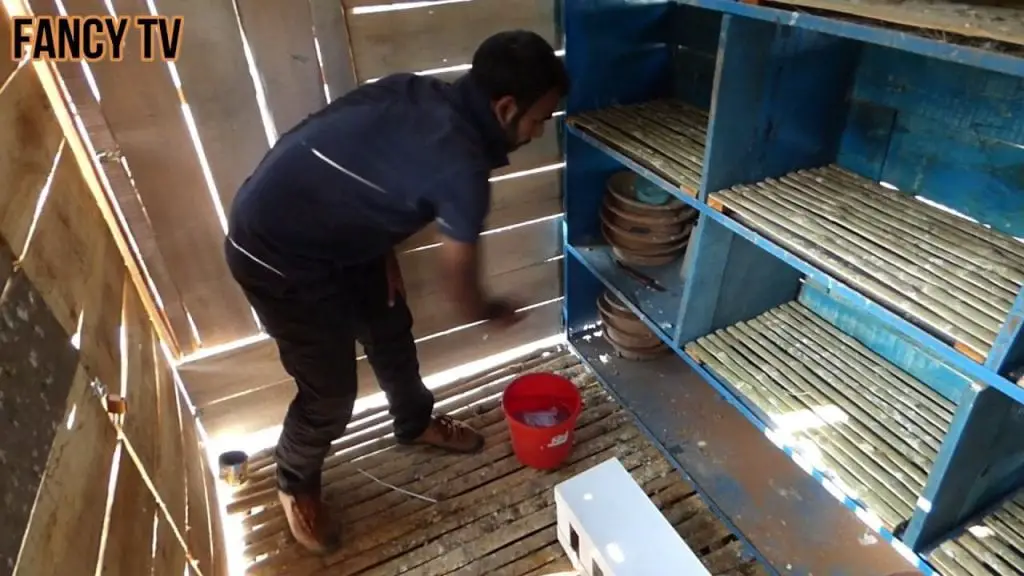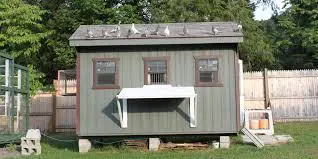Pigeon or Columba Livia with other common names, namely dove, rock, dove, rock pigeon, etc. Its name, the pigeon, was taken from the Latin word “pipio.” This means a young chirping bird, while the word dove came from a Norse word that appeared first in the 14th century as “douve or dova.” The bird order is Columbiformes, while its family is Columbidae having 315 different species. The subspecies are C. l. livia, C. l. atlantis, C. l. canariensis, C. l. gymnocyclus, C. l. targia, C. l. nigricans, C. l. dakhlae, C. l. schimperi, C. l. intermedia, C. l. palaestinae, C. l. gaddi and C. l. neglecta. There are recorded varieties of 350. The most common pigeon is the feral pigeon that has 10-15 million population in Europe. By the way, this bird’s origin is Asia, North Africa, and Europe.
Wild pigeons are found in the coastal areas while the feral pigeons are found mostly in human habitation. They are widely distributed around the world, not including high arctic, Antarctica, and the Sahara Desert. In Europe, there are about 17-28 million of them.
Adults of the rock pigeon are 32-37 centimeters long while their wingspan measures 64-72 centimeters. In terms of colors, they are dark bluish-grey head while the neck and chest are glossy greenish with reddish-purple iridescence that surrounds the neck and wing feathers. The adults have red or orange iris while the young have either brown or greyish brown. The bills are black, having off white cere. The legs are feet are red.
They breed the whole year, but peak season is in summer and spring. They are all monogamous, having one mate for the rest of their lives. The wild ones breed on the coastal cliffs while the feral ones are in urban areas. The nest is on the rock shelf, while building roofs are for the feral birds. They lay 2 white eggs, which are incubated for 17-19 days by both parents. The squabs or the chicks have a yellow down and a pink bill. They are fed by both parents on crop milk. Chicks are fledged for about 30 days. These birds can breed at 6 months.
Did You Know?

- They can fly at an altitude of over 6,000 feet and fly with an average speed of 77.6 mph.
- They can fly between 600-700 miles a day.
- They navigate by sensing the magnetic field of the earth and the sun for direction.
- They drink by sucking water with their beaks like straws.
- They can see colors and the ultraviolet light. They are used for search and rescue missions at sea.
- They passed the mirror test. They have the ability to recognize their own reflection.
- They are intelligent and can recognize the 26 alphabet letters.
The Pigeon Loft
A very basic requirement to pigeon care is a pigeon loft, but it is not just any loft; it must be the right loft. It is very important to have a loft in good form to have a pigeon in good form too. Pigeons must feel happy and at home in their loft. This will help them develop greatly. A good loft must have these:
No draft. Pigeons can catch a cold even from a small draft. Next, it must be dry to avoid fungi from growing. Last, it must have a comfortable temperature.
What Makes a Good Loft?
A loft that is well-designed has the floor, four walls, external fixtures, a roof, internal fixtures, an infirmary, and a storage area for feeding. It should vermin as well as aerial predators. The size should have 8 to 10 cubic feet of air space for each bird. It should have three partitions, namely one for the breeder, another for the young birds, and one for the old birds.
The ceiling must be high enough for your easy cleaning and comfort. Elevating the loft helps in air circulation. Having an apex roof is ideal for air, especially a high apex that would give good ventilation and insulation. Plus, it should be elevated so from the front to the back in order for the rain to roll away from the landing board. For the landing board, it should be large enough for all your birds to land. The trap function will let the pigeons fly get back to the loft but cannot fly out again. Put it in the landing board’s center. Each section should be built with small aviary the pigeons to go out into the rain and sun.
The tiles would be the older baked pans and don’t use concrete quick pans. The walls should have 2 layers and not chipboard or particle for the reason that toxic gasses are produced from a particle/chipboard. Too many changes in the temperature must be avoided. The loft’s front should be placed towards the southeast for the morning sun to warm it. Don’t put it towards a windy position.
Don’t let the rain and wind enter the loft. There should be an open front. Pigeons having open aviaries on in the loft’s front have a better performance. In addition, there should be enough oxygen supply for your bird’s health. Give a pleasurable climate. Make enough blind spots for the youngsters and for everyone as well.
Remember that dampness would be the worst condition that pigeons can have. Therefore, let the sunlight get through the loft. Pigeons will be healthy if there is enough space, dryness, good feeding, grits, minerals, and fresh, clean water.
Things to Keep in Mind
To raise pigeons comes with designing a loft, and it is not easy. It is essential and should be planned well when you plan to keep pigeons as pets. There are various designs you can make. Designs also depend on the season. Here are some things you need to put in mind in designing your pigeon loft.
- Offer them Security
- Lofts are designed mainly for pigeon’s security. your pet’s security must be considered. It should give the best protection from predators, noise, fumes, and other disturbances outside, which can scare and threaten your pet.
- Give Enough Sunlight
- The loft should be getting enough sunlight directly. Sunlight gives Vitamin D, a vitamin for the bird’s bone and feather development. In addition, it is essential for reproductive health.
- Ventilation is Important
- Like humans, pigeons need a breath of fresh air. Therefore, give enough ventilation. It should not fall lower than 10 Celsius and increase beyond 30 Celsius.
- Use Correct Materials
- The walls, ceilings, floors, and everything must be sturdy and strong. Use high-quality woods to get the best and desired results.
- Loft Design
- The loft must make your pigeons feel relaxed inside. Let them have a comfortable rest inside.
Note: After making your loft, regular cleaning must be done. Pigeons tend to be messy. Again, don’t disregard the need for sunlight. It is important for baby pigeons and mothers. Don’t put too many birds. Don’t overcrowd. A loft with a measurement of 6 feet by 6 feet can have 25 birds.
The Importance
Taking every element mentioned will put your bird’s comfort and safety, above all. A loft that is clean and well-built will provide shelter for your pigeons for lots of years, while a poorly built one will just cause trouble for you and your pigeons most especially. A high-quality loft is better than frequent replacement and repairs. Bigger problems will be more difficult to resolve in the end. Therefore, pigeons loft are very important to your pigeon’s overall growth.
How to Clean

Hygiene is an essential aspect of any pets. Below are the cleaning routines to making your loft clean and your bird’s health.
1. Let your pigeons out. Let them fly and close the trap for them not to come back as you clean their loft.
2. Clean and scrape all the nest boxes thoroughly. Do it step by step, with no shortcuts. Do this to avoid the growth of organisms that will cause diseases. Take all the cups and bowls for cleaning. scrape the droppings. Do the same thing with the perches.
3. Scrape the floors too. Take the droppings on the floor. You can use a floor scraper.
4. Hoover twice a month. Hover the floor, boxes, wall, and all surfaces to take the dust, stubborn droppings and all.
5. Disinfect twice a month. Use a disinfectant and spray applicator. Spray the walls, floors, perches and nest boxes.
6. Torch the light once or twice a month. Don’t burn it. Just use a blow torch having a medium flame. Then wave it over the bottom of the nest boxes and damp areas. Include the section floors too.
7. Sprinkle loft treatment. It is a talcum like powder disinfectant to keep the loft dry and prevent bacteria spreading.
Conclusion
There is no place like home. To pigeons, the loft is their home. A place where they can rest, play, and be comfortable. At the end of the day, everyone needs a place to stay. Like humans, pigeons need a shelter. A shelter that is clean, well-built, and safe for them. Therefore, taking into consideration all the things mentioned would guarantee your pigeons a haven.

